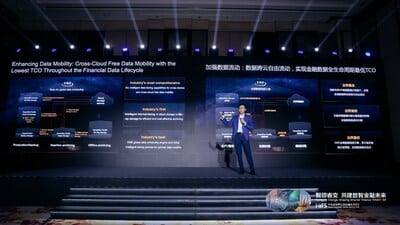In an effort to help financial institutions handle the challenges brought by new data, apps, and resilience, Huawei has introduced its F2F2X architecture. This cutting-edge infrastructure provides data acceleration, resilience, mobility, and management while optimizing storage and capacity capabilities. The architecture aims to efficiently unleash the potential of data and activate the potential of “4+” data centers for the finance industry.
Tackling Data Challenges in Finance
With the banking sector undergoing rapid digital transformation, financial institutions face challenges in processing massive amounts of new data and managing the resulting resource requirements. According to IDC, by 2025, the amount of data generated by banks worldwide will reach 48.6 zettabytes at a CAGR of 26.2%. Huawei’s F2F2X architecture is designed to address capacity, performance, and energy efficiency challenges associated with this data explosion.
Huawei’s F2F2X Architecture Advantages
Some key benefits of Huawei’s F2F2X architecture include:
- Data acceleration+: Core technologies like decoupled storage and compute, multi-controller, and multi-active architecture improve data processing, enabling 30% higher performance than industry competitors.
- Data resilience+: A proprietary machine learning (ML) algorithm offers the industry’s highest detection rate (99.9%) and a 4-layer storage ransomware protection solution.
- Data mobility+: Six intelligent data tiering capabilities and the DME global data scheduling engine ensure the lowest TCO throughout the data lifecycle.
- Data management+: Huawei’s data lifecycle intelligent management platform DME enhances management efficiency by enabling second-level search of 10 billion files and multi-dimensional intelligent insight into global files.
Improving Data Security and Resilience
Ransomware attacks pose a significant threat to financial institutions, and Huawei’s F2F2X architecture aims to improve data resilience. The architecture’s four-layer storage ransomware protection solution and Huawei’s proprietary ML algorithm create a robust defense against these threats, helping prevent data encryption and providing prompt attack warnings.
In conclusion, Huawei’s F2F2X architecture offers a comprehensive solution for financial institutions to address data challenges and improve security resilience in the digital age. By providing accelerated data processing, resilience, mobility, and management alongside effective protection against ransomware attacks, Huawei’s solution is helping financial organizations tackle the challenges brought by digital transformation and the increased demand for data processing.
